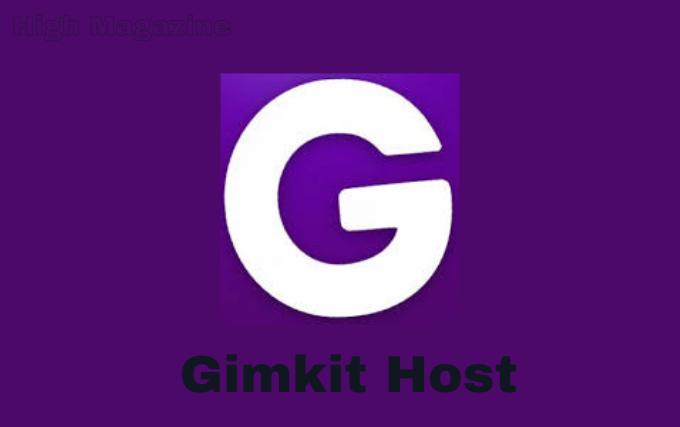Gimkit is an interesting and dynamic learning tool that uses gamified quizzes to improve classroom instruction. This technology, which was developed by a high school student, has become well-liked by teachers due to its capacity to increase student engagement and retention. Instructors can hold live games where students can compete in real time, answer questions, and earn virtual currency.
Setting up a game is only one aspect of being a Gimkit Host; other responsibilities include strategic planning, engagement strategies, and knowing how to use the platform’s features to provide the greatest learning environment.
Understanding the Role of a Gimkit Host
A Gimkit Host is in charge of overseeing the game session, making sure everything runs smoothly, and maintaining student interest. Setting up quizzes, keeping track of participation, and using features to create an engaging learning environment are all part of hosting a game.
The host has the ability to:
- Choose different game modes to fit learning objectives.
- Monitor students’ performance in real time.
- Adjust game settings to match the difficulty level.
- Provide feedback and reinforcement.
Teachers should be knowledgeable about the platform’s capabilities and use techniques to keep students’ attention during the game in order to be an effective host.
Setting Up a Gimkit Game for Maximum Engagement
The game must be properly planned and structured to increase player interest. The essential steps are as follows:
1. Selecting the Right Game Mode
Gimkit provides a variety of game modes that are tailored to various learning objectives and classroom environments. Among the most widely used modes are:
- Classic Mode – A self-paced mode where students answer questions individually to earn in-game money.
- Team Mode – Encourages collaboration by dividing students into teams.
- Trust No One – Inspired by social deduction games, this mode adds an element of mystery.
- The Floor is Lava – A time-based challenge that promotes quick thinking.
Selecting the appropriate game mode guarantees that students stay interested and involved.
2. Customizing Game Settings
Gimkit gives hosts the ability to alter game parameters according to currency accumulation, question frequency, and difficulty level. By modifying these parameters to align with the learning goals, teachers may maintain student interest without becoming overbearing.
For example:
- Setting a time limit prevents students from losing interest.
- Enabling power-ups adds excitement by allowing students to boost their earnings.
- Using random question order ensures students stay alert.
3. Creating or Importing High-Quality Questions
The quality of questions directly affects engagement. When creating quizzes:
- Use clear and concise language to avoid confusion.
- Incorporate images and multimedia to make the content visually appealing.
- Ensure a mix of question types, such as multiple-choice, true/false, and short answer.
Additionally, Gimkit enables teachers to import Quizlet quizzes, saving time and guaranteeing high-quality content.
Engagement Strategies While Hosting a Live Gimkit Game
Maintaining student interest during the lesson is crucial after the game is set up. The following are some recommended practices:
1. Build Excitement Before the Game Starts
- Introduce the game with enthusiasm and explain the learning goals.
- Highlight rewards and incentives to encourage participation.
- Allow students to choose team names or customize their avatars.
Creating anticipation helps students become more invested in the game.
2. Encourage Active Participation
- Use real-time feedback: Comment on student progress and celebrate achievements.
- Motivate quieter students: Check in with those who may need extra encouragement.
- Foster healthy competition: Announce leaderboard updates to maintain excitement.
Promoting involvement guarantees that all students, regardless of ability level, stay involved.
3. Incorporate Learning with Fun
- Integrate humor and storytelling when explaining answers.
- Use real-life examples to connect the questions to practical situations.
- Introduce bonus challenges to keep students on their toes.
Learning becomes more pleasurable when instruction and enjoyment are combined.
4. Monitor Progress and Make Adjustments
As the game progresses:
- Observe which students may need extra support.
- Adjust the difficulty level if the game is too easy or too hard.
- Allow students to discuss answers after the game to reinforce learning.
Being flexible ensures that all students benefit from the experience.
Post-Game Engagement and Reflection
After the game ends, reinforcing learning is crucial. Here’s how:
1. Review Key Takeaways
- Discuss common mistakes and explain the correct answers.
- Highlight top-performing students and teams.
- Ask students to reflect on their strategies and what they learned.
2. Use Game Data for Personalized Learning
Gimkit provides detailed performance reports, which teachers can use to:
- Identify areas where students need improvement.
- Customize future lessons based on results.
- Provide individual feedback to help students progress.
3. Gather Student Feedback
Future lessons can be enhanced by encouraging students to express their opinions about the game. Among the questions to pose are:
- What did you enjoy the most about the game?
- Were the questions too easy, too hard, or just right?
- What would you like to change for the next game?
By using this input, hosts may improve their strategy and create even more captivating sessions in the future.
The Benefits of Hosting Gimkit in the Classroom
Gimkit is more than just a game; it offers numerous educational benefits:
- Increases Engagement: The interactive format keeps students interested in the subject.
- Encourages Collaboration: Team-based modes promote cooperative learning.
- Enhances Retention: Gamification helps students remember key concepts.
- Provides Instant Feedback: Students receive immediate insights into their performance.
- Adapts to Different Learning Styles: The platform caters to visual, auditory, and kinesthetic learners.
Teachers can create dynamic learning environments in their classrooms by utilizing these advantages.
Conclusion
For educators and game planners who want to design dynamic, captivating learning environments, Gimkit Host is a vital tool. It improves teaching and retention by enabling hosts to create live tests, oversee participation, and monitor performance. It is perfect for training sessions, classrooms, and remote learning because of its real-time involvement, which creates a lively and competitive learning atmosphere. Gimkit Host guarantees an engaging and successful teaching strategy with its adaptable game modes and data-driven insights. Platforms like Gimkit are helping to close the gap between education and entertainment as digital learning develops, making learning more powerful and pleasurable.


